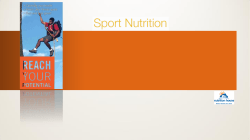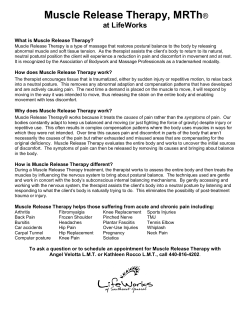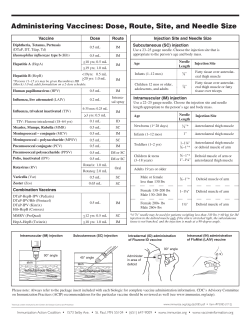
fact sheet increasing muscle mass
fact sheet increasing muscle mass Bulking up can be an important performance or aesthetic goal in the development of an athlete. Commonly, athletes will desire muscle mass and strength gains; with few wanting an increase in body fat. For a gain in muscle mass, the combination of a welldesigned training program plus an energy-rich diet with adequate protein is essential. Muscle mass is influenced by an array of factors including genetics, training program, training history and dietary intake. If all are optimised, gains of 0.25-0.5 kg per week may be possible initially, but this will depend on genetics and training history. Overall body composition goals must also be considered as well as performance and training schedules. Far too many athletes want to increase muscle mass and reduce body fat simultaneously, often during a competitive season. This is not achievable for most individuals as gaining muscle and losing fat have mutually exclusive nutritional goals, which may be in opposition to performance nutrition requirements. To promote gains in muscle mass, the priority must be to increase overall energy intake while effective fat loss demands a reduction in energy intake. Priorities and timeframes must be set with training and diet adjusted accordingly. Increasing Energy Intake Increasing dietary energy intake (i.e. kilocalories or kilojoules) is essential if significant gains in muscle mass are to be achieved. For some athletes this can be a real challenge. Frequent and/ or prolonged training sessions can limit opportunities for meals and snacks while intense training can curb your appetite. Novel strategies like eating more energy-dense snacks and drinks, particularly around training may be required to overcome such obstacles. While an increase in energy intake is essential for gains in muscle mass, it should not be considered an excuse to indulge in high-fat, nutrient-poor, convenience food. Additional dietary fat can increase body fat stores which may pose an issue for some athletes, although for others, nutritious high fat foods like nuts and seeds may be an important inclusion to increase energy intake. For those concerned about gaining extra body fat, small increments in energy intake should be introduced until desirable results are achieved. Regular body composition assessment may help to alleviate concern among athletes with body fat gain fears. Nutrition to support Training Research suggests that nutritional support of training with both pre and post training snacks rich in carbohydrate and high quality protein creates an environment conducive to gains in muscle size and strength. The protein helps to further stimulate muscle www.sportsdietitians.com.au building while the carbohydrate provides additional energy to fuel training and also reduce protein breakdown. A positive protein balance, which helps stimulate muscle growth, can be achieved by spreading protein intake over the day and also including appropriate pre-and-post training snacks or meals. Just 20-30 grams of carbohydrate and 10-20 grams of protein, taken around training, can influence lean muscle mass gains, which even individuals on a low energy budget can afford. It is best to include a pre-training snack or meal that provides a good mix of carbohydrate and protein, 2-3 hours before training. This should be matched by a similar snack or meal following training (within 1 hour if possible) to achieve both muscle building and recovery goals. Box 1: Tips for increasing energy intake • Increase meal / snack frequency. It’s easier to eat more frequently than increasing the size of existing meals and snacks. This should become a priority, even during busy days. Aim to include three main meals and multiple snacks each day, including pre and post training snacks. • Make use of energy-dense drinks (e.g. smoothies, milk shakes, powdered meal replacement formulas, fruit juice, cordial, sports drinks) and other nutritious, energy rich foods (e.g. cereal bars, dried fruit/trail mix). Skim milk powder can be added to homemade milk drinks for an extra protein and energy boost. These drinks can be particularly useful for athletes unable to tolerate solid food before/after exercise or those with smaller appetites. • Moderate intake of high fibre options. As you look to increase your overall food intake, allow your intake of low energy fruit and vegetables to remain steady. Although a great source of important nutrients, maintaining your intake of these foods will allow more room for energy-dense, nutrient-rich options. • Plan the day’s intake of food. This ensures suitable foods and drinks are at hand as needed. Keep a ready supply of nonperishable snacks in your training bag e.g. tetra packs of UHT flavoured milk/fruit juice, cereal bars, dried fruit, powdered meal replacement formulas and sports drinks. More Protein? For many years it was thought that eating more protein would allow for optimal muscle building, however most athletes in hard training already consume adequate protein in their usual dietary intake. Attention should be focused on a wider distribution and variety of protein over the day, even on non-training days. fact sheet increasing muscle mass Inclusion of a small serve of a protein rich food at each meal and snack throughout the day helps to create an optimal environment for gains in muscle mass. If you train early in the morning, a pretraining snack is an excellent start to the day. See the fact sheet on Protein for Athletes on our website for further information on protein needs. Supplementary Support? Athletes attempting to increase muscle mass are particularly vulnerable to the emotive marketing of supplements promoted to build muscle. Popular muscle building supplements include protein powders, creatine, HMB, nitric oxide, colostrum and individual amino acid supplements which may come in the form of sports bars, drinks, pills and capsules, powders and gels. However, most of these products fail to live up to expectations and the scrutiny of scientific support. Liquid meal supplements and creatine may be an exception to the rule. The support of a Sports Dietitian will not only help you identify fact from fiction in the supplement industry but also provide guidance on appropriate protocols for their use. Liquid Meal Supplements For individuals who struggle to achieve increased energy needs, liquid meal supplements or ‘protein powders’ offer convenient, compact options for boosting energy, carbohydrate and protein intake when everyday foods are not available or are impractical to consume. When choosing a protein powder, look for one that is rich in carbohydrate, moderate in protein, low fat, fortified with vitamins and minerals, tasty and economical. Alternatively, home made shakes can be made up to provide a similar nutrient profile at a fraction of the cost. Ask a Sports Dietitian for their recommendations or a suitable recipe! Creatine Creatine supplementation is particularly popular among athletes attempting to increase muscle mass. While debate continues over the direct muscle building effect of creatine, it may indirectly support gains in muscle mass by promoting recovery between exercises and allowing you to do more total work (see Creatine supplementation and sports performance). Support for the muscle-building claims associated with other products like HMB, colostrum and specific amino acids are limited or lacking. Stick with the proven winning formula of a well planned training program and meal plan. ‘Magic bullets’ will come and go, but truly successful muscle building programs are based on hard training and a well planned daily intake of food. www.sportsdietitians.com.au Training To gain muscle mass, an appropriate and specific resistance training program needs to be adopted. This program should be specific to your performance and aesthetic goals as well as your lifestyle and training schedule. The off-season is an ideal time to work on muscle mass gains. A strength and conditioning coach can help you develop an effective training program to achieve the right balance between resistance and other training. Box 2: Pre and Post Training Snack Ideas • Tub of low fat yoghurt & fruit • Bowl of cereal and low fat milk • Sandwich with lean ham & salad • Low fat instant noodles, pasta sauces & ‘light’ cheese • Homemade smoothies on low fat milk & yoghurt, honey and fruit plus a scoop of skim milk powder for an extra energy boost • Fruit muffin or toast and a glass of low fat milk • Breakfast/cereal bar & liquid meal supplement Each snack provides at least 10 grams of protein and 35 grams of carbohydrate which research indicates is enough to promote muscle building during exercise. Summary • Increase daily energy intake by increasing meal/snack frequency and making use of energy-rich drinks/snacks. • The meal plan should be based on nutritious carbohydraterich foods, and include a small serve of protein-rich food/fluid at each meal/snack to optimise training responses, especially before and after training. • Get organised - plan food and fluids throughout the day to make sure suitable choices are always available. • To increase muscle mass, a suitable and specific hypertrophy program should be designed in conjunction with a strength and conditioning coach. • Only after training and diet have been optimised should you consider a sports supplement. The professional support of a Sports Dietitian can help you determine the best supplement for you. • Set realistic goals and monitor progress regularly. To see how effective your training program is, assess your body mass and composition. • Commitment, perseverance, and consistency are essential. Developing optimal levels of strength and muscle mass for your sport may take years, especially if you don’t have the luxury of a prolonged off-season each year. © This is a sports nutrition publication of Sports Dietitians Australia.
© Copyright 2025





















